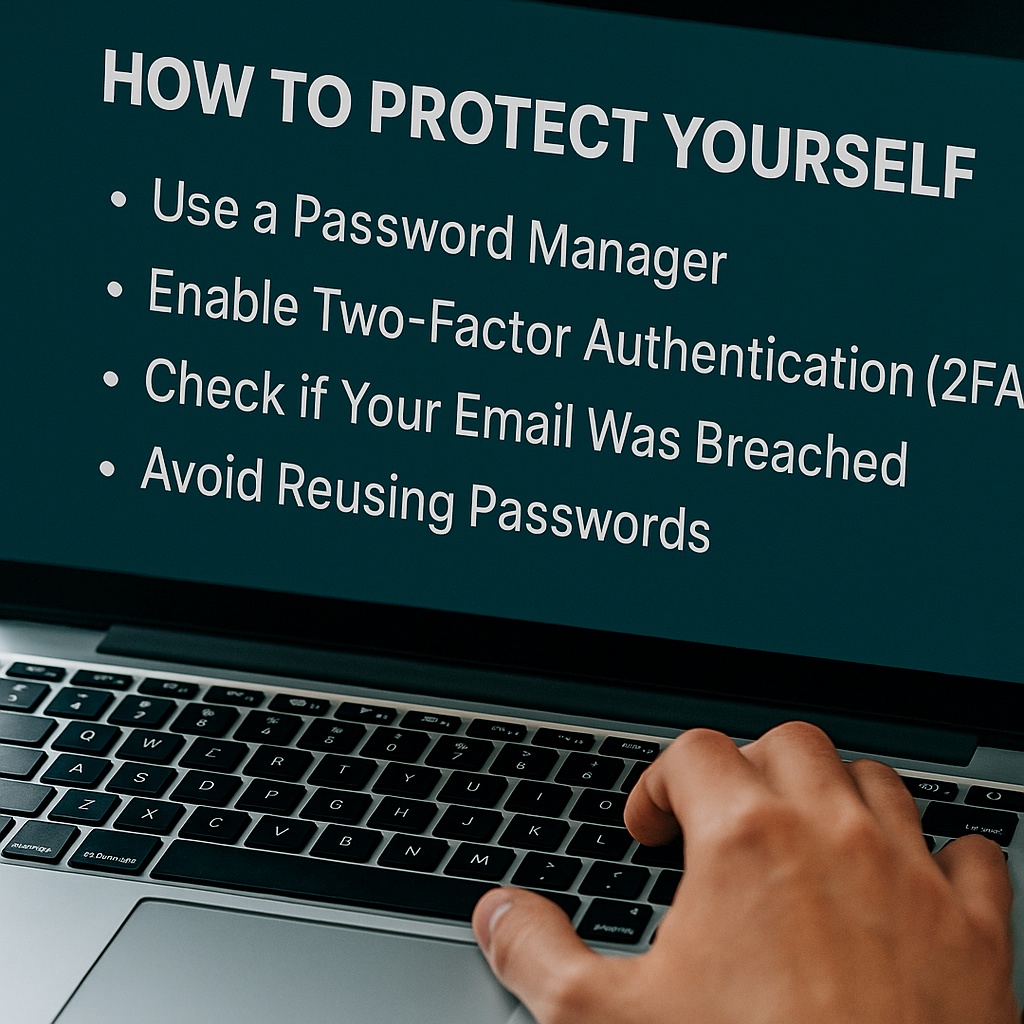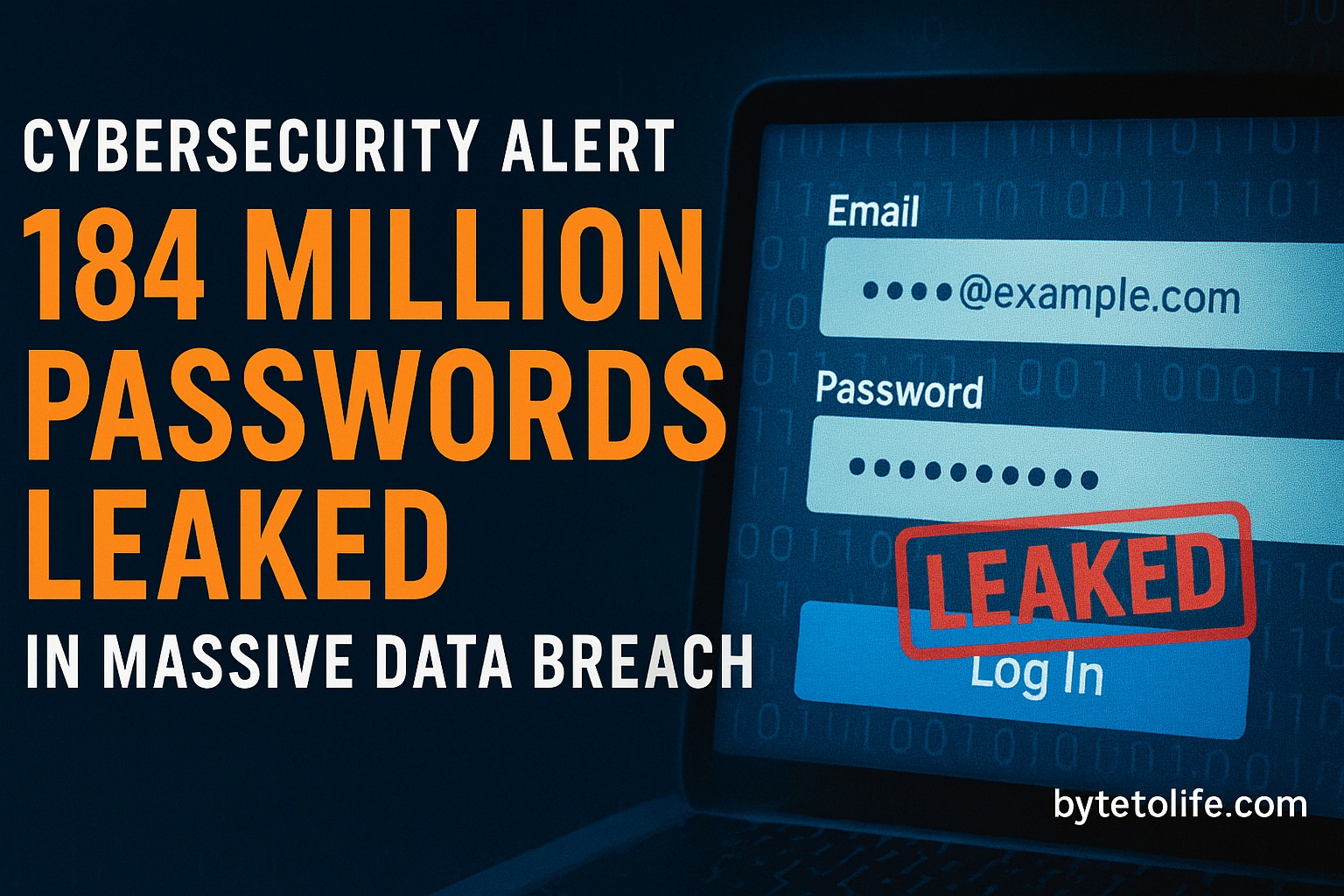In one of the most alarming cybersecurity incidents of 2025, over 184 million login credentials—including emails and passwords—were discovered in an unprotected, publicly accessible database. Millions of users from major services like Google, Apple, Facebook, Microsoft, Instagram, Snapchat — and even banking and government systems — are impacted by this massive data breach.
For readers of ByteToLife.com, this event underscores the critical importance of robust cybersecurity practices. Let’s dive into what happened, who’s affected, and how you can protect yourself in an increasingly connected world.
What Exactly Happened?
Cybersecurity researcher Jeremiah Fowler uncovered an unsecured Elasticsearch database containing 184,162,718 records—totaling over 47GB of sensitive data. This included plaintext emails, passwords, usernames, and links tied to user accounts.
Even more concerning: the database had no password, encryption, or authentication layer. This meant that anyone who found it online could access and download the data freely—no technical skills or hacking tools required.
Who Was Affected?
The exposed data came from a wide variety of platforms and services, including:
- Tech Companies: Google, Apple, Facebook, Microsoft, Instagram, Snapchat
- Financial Institutions: Banks, credit providers, and fintech apps
- Government Portals: Authentication tokens and login URLs for state and federal services
- Healthcare Platforms: Online patient management and medical access systems
This breach is unique because it wasn’t the result of a traditional hack—it stemmed from a cloud misconfiguration. A small mistake that triggered a chain of major consequences.
Why This Breach Matters
Let’s break down the key reasons why this incident is a cybersecurity wake-up call:
- Plaintext Exposure: The passwords were not encrypted, making them immediately usable by bad actors.
- Widespread Risk: Reusing passwords across different services puts users at serious risk. A breach like this can lead to a domino effect of account takeovers.
- Cloud Misconfigurations: This isn’t a new problem—IBM’s 2024 Data Breach Report found that cloud misconfiguration was responsible for 82% of data exposures that year.
How Cybercriminals Can Exploit the Leak
Once credentials are leaked, threat actors can:
- Use credential stuffing to attempt logins on other platforms
- Engage in phishing scams with personalized details
- Sell the data on dark web forums
- Launch targeted social engineering attacks on users or employees
How to Protect Yourself

Whether you were affected or not, this is a good moment to tighten your digital hygiene. Here’s how:
1. Use a Password Manager
Tools like Bitwarden or LastPass help you generate and manage unique, complex passwords for every site you use.
2. Enable Two-Factor Authentication (2FA)
Activate 2FA wherever possible—especially on email, banking, and cloud storage accounts. Even if your password is compromised, this provides an extra layer of protection.
3. Check if Your Email Was Breached
Use trusted tools like Have I Been Pwned to see if your credentials were exposed.
4. Avoid Reusing Passwords
Every account should have a unique password. Using the same login details across sites increases your risk of cross-platform breaches.
5. Monitor Account Activity
Keep an eye on login history and unusual activity. Most platforms let you see recent sessions and login locations.
Lessons for Businesses and Developers
If you manage infrastructure, this breach also offers urgent lessons:
- Always encrypt sensitive data at rest
- Enforce access control and authentication for databases
- Audit your cloud infrastructure regularly
- Enable automatic alerts for misconfigurations and anomalies
What ByteToLife.com Recommends
Our team at ByteToLife.com strongly encourages everyone—users and developers alike—to take cybersecurity seriously. Today’s data leak isn’t just a tech failure; it’s a human one, and preventable with better practices and vigilance.
Closing Thoughts
The exposure of 184 million passwords is not just another headline. It’s a stark reminder that in our increasingly digital world, security begins with awareness. From setting stronger passwords to educating users and auditing cloud configurations—everyone plays a role in keeping the web safe.
Stay informed. Stay protected. And never underestimate the value of good digital hygiene.
Written by ByteToLife.com – helping you navigate technology with confidence.



